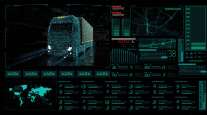Carriers Hoping to See Relief After Years of Insurance Premium Increases

[Stay on top of transportation news: Get TTNews in your inbox.]
Carriers have weathered years of insurance premium increases and may see slight relief in 2023, but insurance providers continue to face inflation, economic pressures and larger verdicts in both average loss and nuclear verdicts.
“That said, it seems as though the market may be starting to soften, as we have seen smaller average renewal increases in 2022 and early 2023,” said Chris Gulker, senior vice president of transportation for TrueNorth. “Well-run companies investing in safety and technology with a solid loss history are seeing small single-digit increases, flat renewals and even small decreases in some cases.”
Michael Birge, president of Hub International’s transportation services division, said commercial auto has experienced about five straight years of double-digit increases. “The trend is starting to level off and even go down,” he said.
Even within a hard insurance market, fleets have options to control costs, and carriers are turning to technology, including cameras, telemetry and artificial intelligence, to help mitigate risk and reduce premiums, Gulker said.
Technology and Artificial Intelligence
Fleets can take on more risk with a higher deductible or self-insurance to cut costs, but Birge said the best approach is to have a good risk management plan and follow it.
There is a wide range of fleet risk management solutions available today. “There are several categories customers can leverage to help with safety that insurance companies are taking note of,” said Luke Wachtel, senior vice president of transportation and logistics for Platform Science.
Some insurers subsidize the telematics devices and other in-cab AI or video safety systems while others require them, and more insurers are incorporating data from video safety solutions and telematics into their risk models for improved underwriting, said Stephanie Forster, principal strategic business developer, corporate development, for Omnitracs.
Navigation technology can also improve safety. “It is not just providing a more conservative, safe route, but putting out alerts that you’re driving through a high accident area and warning the driver to pay attention,” Wachtel said. “Some of these are new enough that insurance companies are offering lower premiums, but the fleets can go back and say, ‘Look at this data.’ ”

The frequency and severity of nuclear verdicts do not seem to be decreasing and the cost of the average insurance claim continues to rise, Gulker says. (moodboard/Getty Images)
Michael Dorfman, chief operating officer of Koffie Financial, said that, historically, insurers had a problem understanding what equipment carriers are using, how it is being used and how they monitor it.
“Legacy insurance companies have a challenge understanding that at a granular level to build that into insurance policies. The broad approach has been, ‘That’s great. Let us see how it plays out, and then you can be eligible for discounts,” Dorfman said. “We’re trying to segment the trucking market better, so if you’re in the top tier of trucking companies, you can get a discount.”
Koffie Financial, which requires cameras and is connected to all of its customers’ trucks, is among the insurers that evaluate equipment to provide upfront discounts. “We want to identify these safety technologies, knowing they can have benefits and price them in now rather than wait five years,” said Ian White, CEO of Koffie, which offers a dividend program that gives fleets up to 10% back on their renewal based on their loss ratio from the prior year.

White
Nauto uses its technology to help fleets mitigate risk and has arrangements with some insurance companies that offer discounts right away. Stefan Heck, CEO of Nauto, said the company creates customized risk assessments using customer data and a sophisticated risk model. “Insurance companies love this because we can take drivers and dramatically change their risk behavior. We typically see a 60% reduction in risk behavior,” he said.
Commercial truck insurance firm HDVI subsidizes cameras for fleets, can plug into a fleet’s telematics device for discounts and has a dedicated fleet services team that reviews data, trends and risk factors with fleets, said Reid Spitz, the firm’s chief product officer. “It is a holistic view,” he said, adding that HDVI’s book of business has about a 40% lower predicted crash rate than the general industry and offers discounts of up to 12% for its 1.0 product and up to 20% for its new second generation of HDVI Shift.
Jacques DeLarochelliere, CEO and co-founder of Isaac Instruments, said cameras are an obvious part of improving safety. “The less obvious piece and a differentiator with our offer is the telemetry part. We see some behaviors in the data that we cannot see with the cameras,” he said. “When we do the recap and look at the telemetry data, 90% of the time, the motorist is at fault, but the first impression is it is the big rig, and they always have to defend themselves.”
Isaac Instruments’ automated or real-time analysis of images can also warn of different situations or potential accidents.
“All trucking companies are at risk. You have to be in the position to defend yourself and have a strategy in place,” DeLarochelliere said. “The warnings and driver training show the jury you did everything you could to avoid those consequences.”
Nauto’s Heck said computer vision can help determine why something took place, which is more important than just capturing the event.

With help from its camera device, Nauto uses its technology to create customized risk assessments using customer data and a sophisticated risk model. (Nauto)
“If you take the typical telematics where you’re tracking assets, speeding and hard braking, those are a very rough proxy for risk. If you take hard braking, which is the most common event, 80% of the hard brakes are something else happening outside, are not the drivers’ fault,” he said. “If you have a safety system that doesn’t know the drivers’ attention state, you’re missing the majority of the risk.”
Bill Zenk, executive vice president of risk and workforce solutions for TrueNorth, said the best companies are using AI in lockstep with human-to-human interaction to bolster the training and development of their workforce. TrueNorth has partnered with BlueWire.
“Their AI technology looks at a motor carrier’s lawsuit vulnerability by pulling in multiple streams of data,” he said. “The tool churns out a score that informs us where the motor carrier’s nuclear verdict vulnerabilities are, so we can find ways to minimize the threat.”
Ongoing Cost Pressures
Even if fleets are becoming safer, insurance providers are facing headwinds. “Social inflation, medical costs and truck replacement costs and repair rates all continue to put pressure on insurance rates as they all experience increases that are driving loss costs and severity,” said Gary Flaherty, senior vice president of excess and surplus lines, commercial auto at Nationwide.
While nuclear verdicts remain a factor, the cost of small claims is increasing. “A $2,500 claim is now $5,000 over the last three years. Underwriters are looking at the frequency of claims and costs,” Birge said. “If you do the math, those small claims are significant.”
Prices for parts and labor plus new technology on vehicles are driving costs higher. “Any new car out there that has cameras, sensors and radars. Even a mild collision can be a costly repair,” Dorfman said.
Nationwide’s claims data shows OEM parts on as much as a six-month delay or more. “This is creating extraordinary demand for used parts, and we are seeing those part prices skyrocket. This is causing increased storage costs when parts delays occur and experiencing more units being totaled due to repair costs now at such high levels,” Flaherty said.
The frequency and severity of nuclear verdicts do not seem to be decreasing and the cost of the average insurance claim continues to rise, Gulker said.

Improvements in safety and navigation technology has helped fleets better utilize their risk management plans. (ISAAC Instruments)
Although nuclear verdicts capture the attention, 99% of accidents’ costs tend to be $1 million or less. “That is really where the cost is squeezing the small trucking company,” Spitz said.
Telematics, specifically video, when used properly, has had a major impact on claim defense. “Companies that embrace these types of technology will be better positioned to avoid large claims and settlements with improvements in driver performance and unmistakable evidence as to what happened preceding and during an event,” Flaherty said.
When a professional driver can immediately show the video to a state trooper, it can change how a report gets written up, which can make a big difference in court, Dorfman explained.
The majority of professional drivers are not at fault but get accused, DeLarochelliere said. “If they know you have a camera, it is a different conversation. If they know you have telemetry, it is a different conversation.”

DeLarochelliere
Some systems offer workflows with if/then scenarios if a crash occurs. “Drivers can go to a workflow and say, ‘I’ve been in an accident,’ ” Wachtel said, adding that the system can walk them through the next steps, such as capturing pictures and getting the officer’s number. “There are ways to arm people for claims.”
If the video does show a driver is at fault, companies can still benefit from the information. “Ideally, if the driver is at fault, you still know that faster so we can make quick settlements and save on legal and defense costs,” Dorfman said.
Fleets should act quickly on any potential claims, and Birge said the late reporting of claims is a problem. “It puts everyone behind the eight ball,” he said. “It could just be a parking lot claim, and some creative plaintiff’s attorney comes back a day before the statute of limitations, and you have no records and no way to defend yourself.”
There has been an increase in plaintiff’s attorneys waiting longer to report claims. “They know the longer it goes on, the bigger the settlement will be. If you can see it occurred, you know to reach out to the claimant earlier in the process and get the claims process started,” Spitz said. “With telematics data, you can get better information about if you’re actually at fault, and you can know that more quickly, so you can know if you want to take something to court or not.”

Spitz
As the cost of claims have risen, some insurance companies opt to settle a claim than fight it in court. “According to the ATRI report, the cost of settling a claim is 37.7% larger than verdict awards, but still insurance companies would rather not risk going in front of a jury and facing the possibility of a million-dollar loss,” Spitz said.
When a nuclear verdict occurs, there is usually some element of gross negligence involved, and DeLarochelliere said carriers want to show they had processes in place and acted in good faith before an accident occurred.
Bad things happen to good companies, but in general, carriers that run a good operation, take care of their drivers, follow their processes and procedures and update technology, give their attorney a better chance at properly defending them, Birge said.
Want more news? Listen to today's daily briefing below or go here for more info:




